When I began collecting coins in the mid-1970s, one of the first things I did was to join a local coin club. There, I not only learned more about the hobby but I also established some friendships that have lasted a lifetime. One of those I met through the local club was its then-president, Randy Miller. Randys passion for the hobby and his knowledge was readily evident. This has proven itself in the years since, as he makes a living as a professional numismatist, operating Chief Coin & Supply, LLC, Oshkosh, Wis.
Recently, Randy allowed me access to his extensive inventory in the preparation of close-up images for this book. These included some very rare coins that he let me handle and place under a digital microscope. Without his cooperation, much of what youll see within could not have come to fruition, and if it did, it would certainly be of lesser quality. I greatly appreciate and thank him for his efforts in this regard, the knowledge he imparted in preparation of the images and other aspects of this book, and his friendship and support through the years.
I also want to thank Alan Herbert for his contribution of the Foreword for this book. Alan is a renowned error and variety specialist and the author of several important books in the field, including Warmans U.S. Coin Collecting. Even if youve never read one of his books, if youve opened a copy of any Krause Publications periodical, youve likely read something he has written. Known as the Answer Man, Alan has been fielding readers questions on coins, medals, tokens and paper money for many years. I am grateful such a well-known hobby figure like Alan agreed to contribute to this book.
Robert R. Van Ryzin
Foreword
For every 1,000 collectors, there are one or two whose interest lies more in the historical value than the monetary value, allowing curiosity to guide their collecting feet. A standout among that tiny minority is the author of this book, who digs into the nooks and crannies of coin collecting for the most interesting tidbits of information. His favorite pastime is leading his readers on an educational journey one that is not boring or annoying.
The veteran collector may pass this by, certain that he or she knows it all, and doesnt need a book to add to their store of knowledge. Frankly, I would be amazed if you could read it cover to cover and come away saying, I didnt see one single thing I didnt know. Id put good money on the line that you couldnt honestly say that.
Putting it bluntly, this book is crammed with facts, well-illustrated and specifically prepared for both the novice and experienced collector. Adding to the mix are explanations definitions if you will that allow the reader to easily understand the why behind our coin designs. Bob approaches coins with the eye and mind of the journalist, asking why, where, when, how and what.
This approach makes for easy reading.
Its refreshing to allow someone else to do the lengthy research needed to answer the recurring questions. Now that youve turned the first few pages, its time to find your comfortable chair where you and this easy read can curl up, because once started, you may read straight through to the back cover. It will be an important addition to your coin reference library or the start of a library.
Congratulations on another fine book.
Alan Herbert
Author
Warmans U.S. Coin Collecting
Introduction
One of the undeniable joys of collecting, whether it be antique furniture, art glass, modern art, comics, movie posters, stamps or, in this case, money, is the thrill of the hunt. It often seems more important and exhilarating than the actual possession of the item that was so fervently and diligently sought.
You can find yourself looking through catalog after catalog of auction lots, examining specimen after specimen, to find that one special item the one that in many ways completes your collection and is, in fact, that special piece few others can possess or have the wisdom to do so. This is what ties all collectors together: the common pursuit of the seemingly unobtainable that, once obtained, justifies the collectors existence, the long hours of pursuit, the looks of non-comprehension from non-collectors, including spouses, who sometimes question the outlay of funds to acquire that special collectible.
I, for example, especially enjoy the hunt. It sometimes consumes me. It sometimes makes me raise my bid higher than my preset limit to acquire an object of my desire. It makes me spend money on items that sometimes, frankly, I should have avoided. But when caught up in the hunt, theres nothing that can keep me from going after that seemingly life-affirming collectible that has presented itself to me.
If Ive learned one thing bidding in auctions and buying collectibles in general, it is that its easy to talk yourself into anything. Perhaps this little mark on a coin or medal isnt that bad. Or, worse yet, this item has to be rare since I havent seen it before, or because estimates are that this many or that many exist, or that this many or that many are the only ones graded this high. Plus, theres the inevitable: I may never get another chance to obtain this collectible. So if you are just entering the hobby, youll soon learn as I did, that you have to gain as much knowledge of what youre buying or attempting to buy as you can in order to protect yourself from making a bad decision.
For instance, just knowing how many of a given item were minted or how many were released to the public isnt always good enough. There may have been more melted or worn, hoarded or exported than another date and mint of the same denomination. Changes in a design during a given year could have led to a rare type or a scarce mintmarked issue. Also, minting processes at this or that mint might have caused an issue to be only encountered fully struck on a scarce number of pieces.
Out of necessity, you have to become an expert. In doing so, you learn there is no better teacher than study and studying the topic close up. To do so, you will need not only good sources of information, such as books and periodicals, but also an understanding of the minting process. One of the best ways to begin to do this is to grab a magnifying glass and dive right in. With a good glass, youll quickly discover the difference between lines on the surface of a coin added during the minting process and those produced after a coin left the mint, either by damage or artificial means. Youll also learn to spot wear and to distinguish it from strike weakness.
Ive always found it fun to look at coins under high magnification. I like seeing signs of metal flow from the original striking and examining details such as mintmarks and their styles close up. There are those in the hobby who say a low power magnifying glass is a collectors best friend. I like a high power, 10x minimum glass to explore a coin, medal or token. My recommendation is to try both, but I think youll find that viewing the surface through high magnification, as you will hopefully see in this book, will not only make the distinction of key varieties easier, but will also prove to be part of the fun of the hobby.


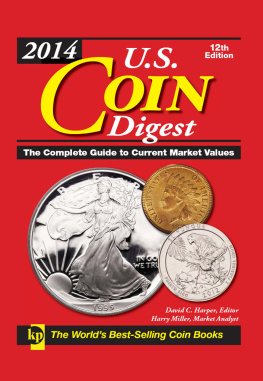
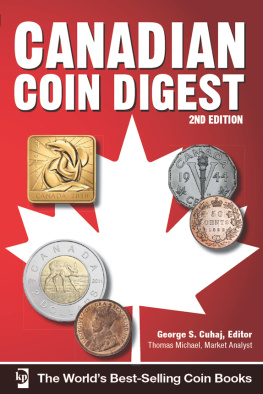

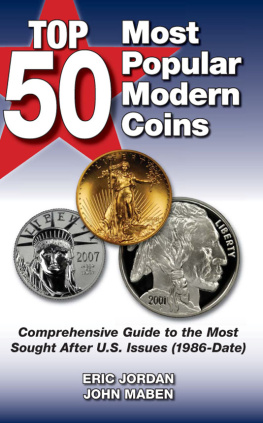


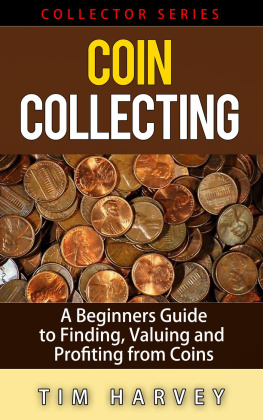

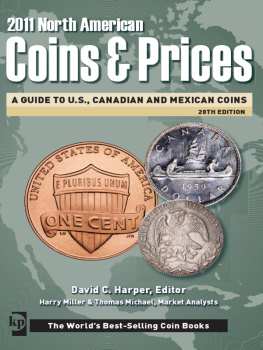
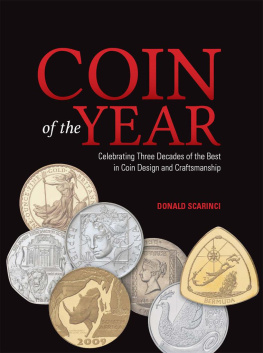
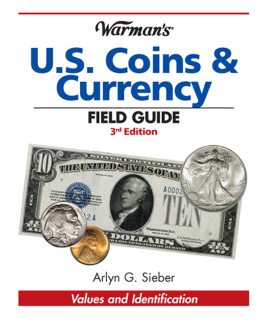


 UP
UP